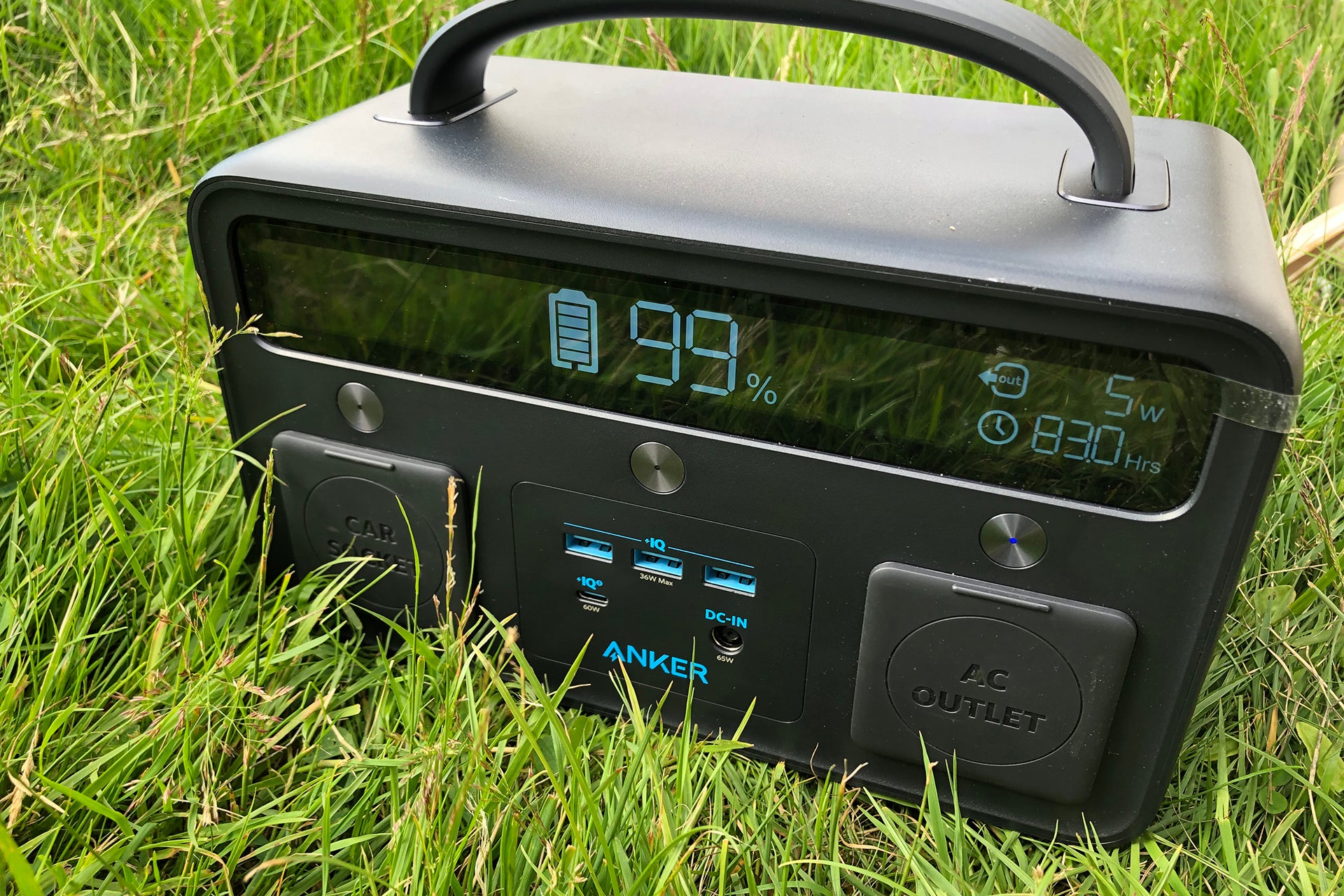Dabbsson DBS2300 Review
A long-lasting power station that's highly expandable.
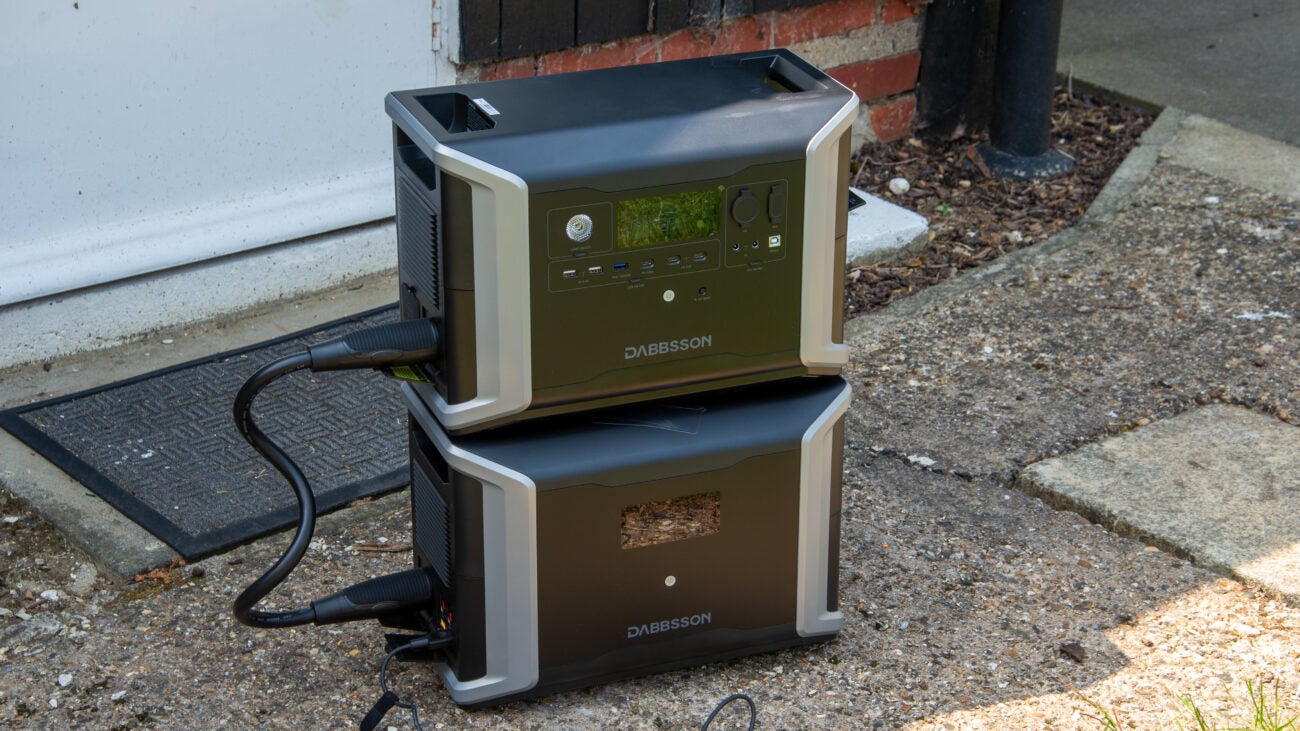
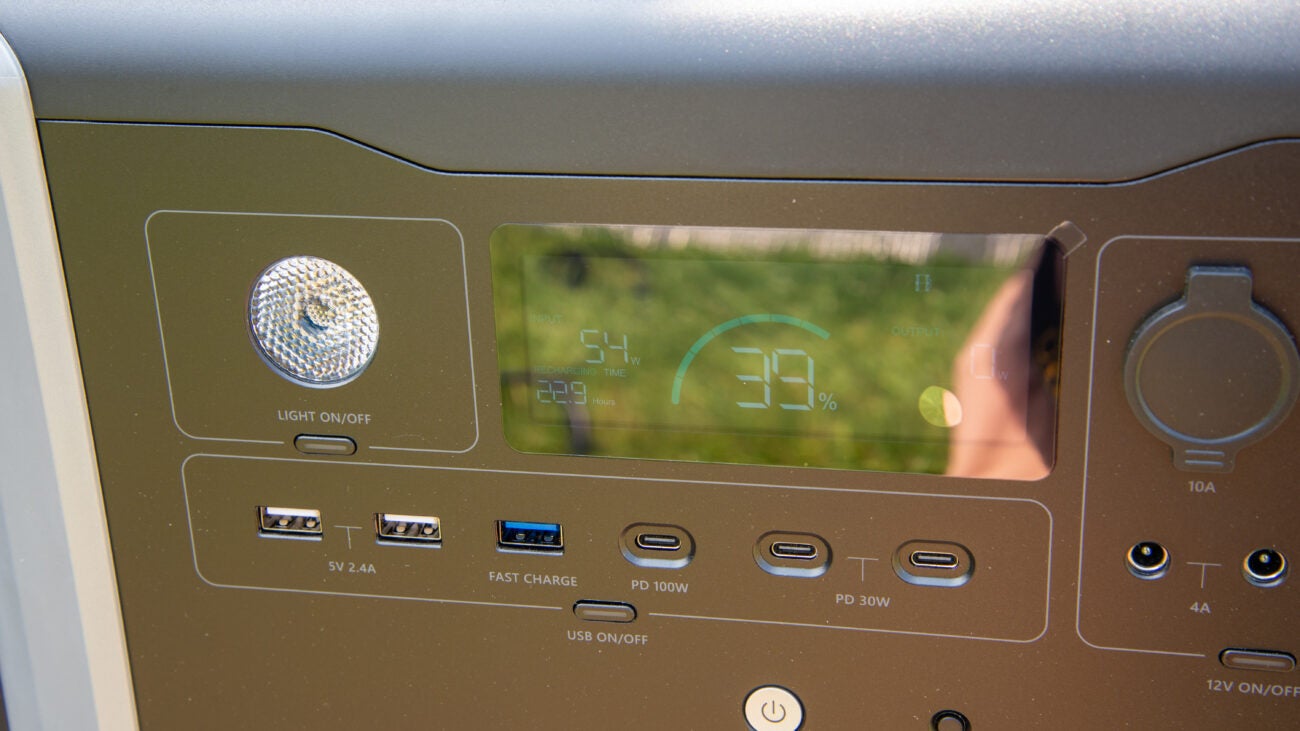
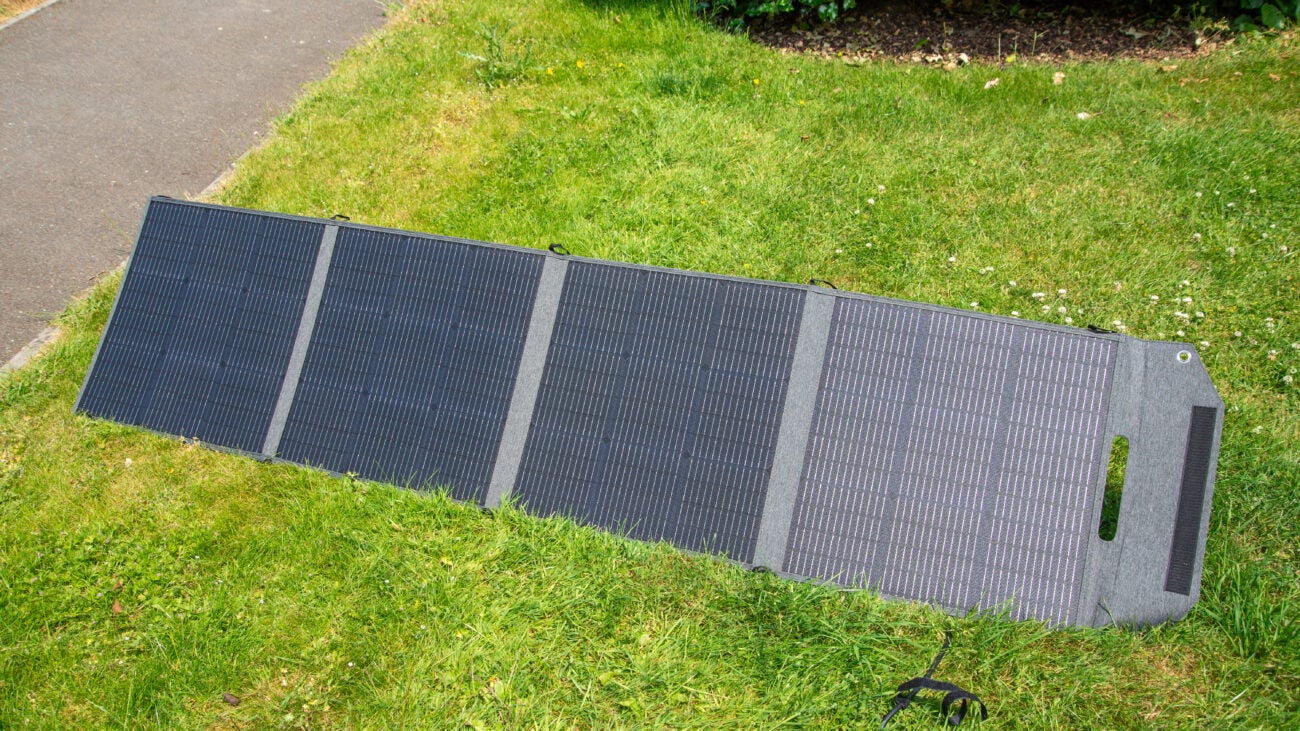
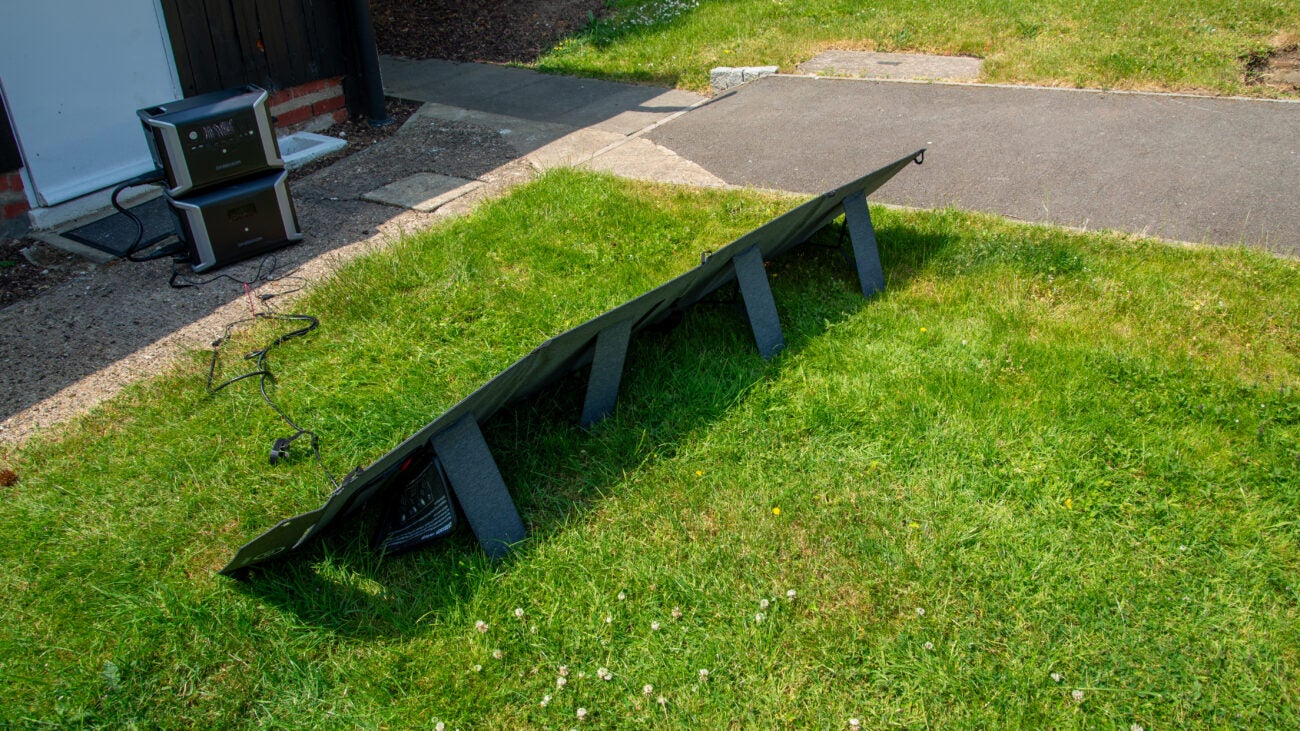
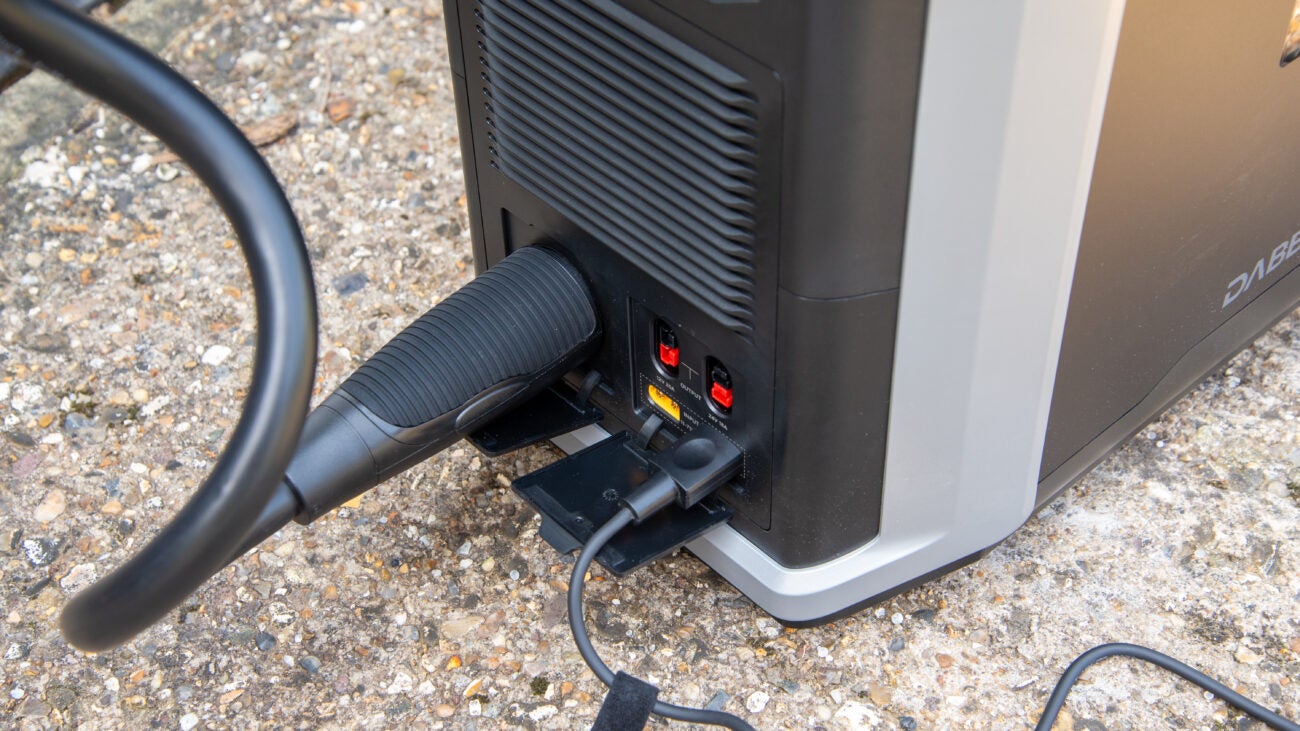
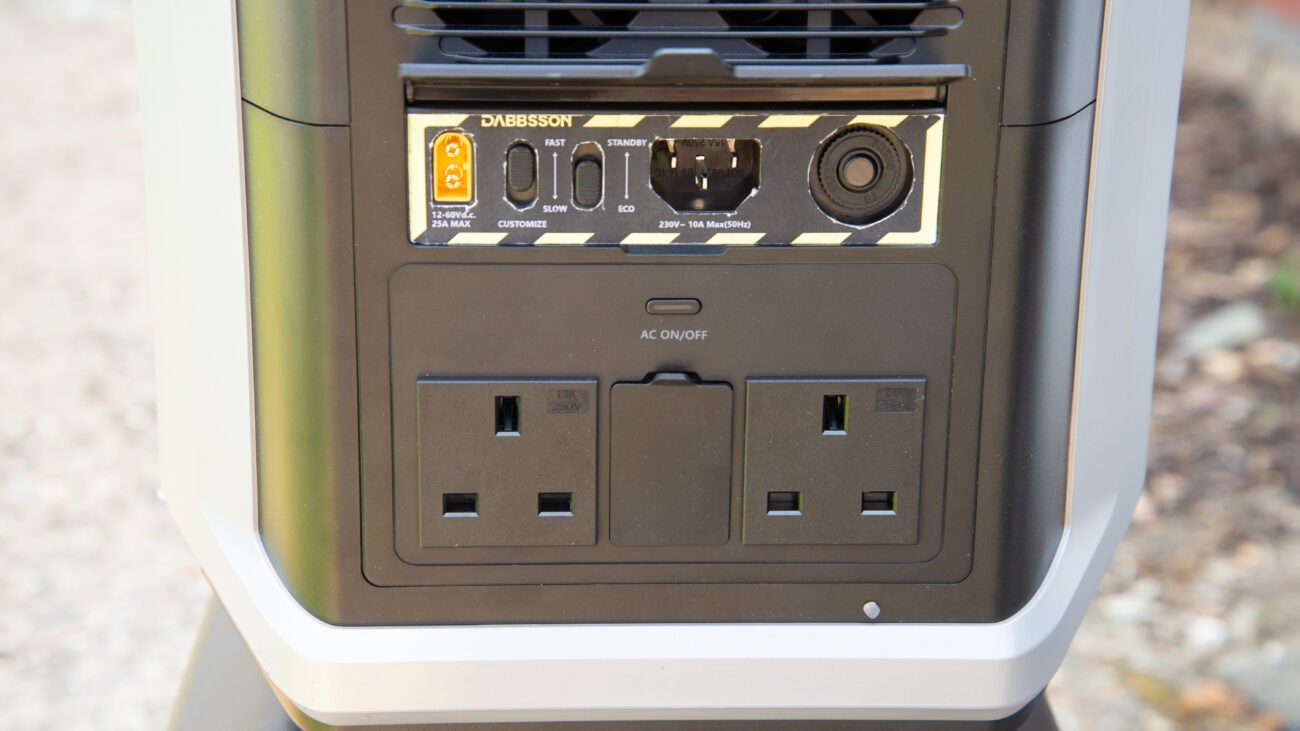
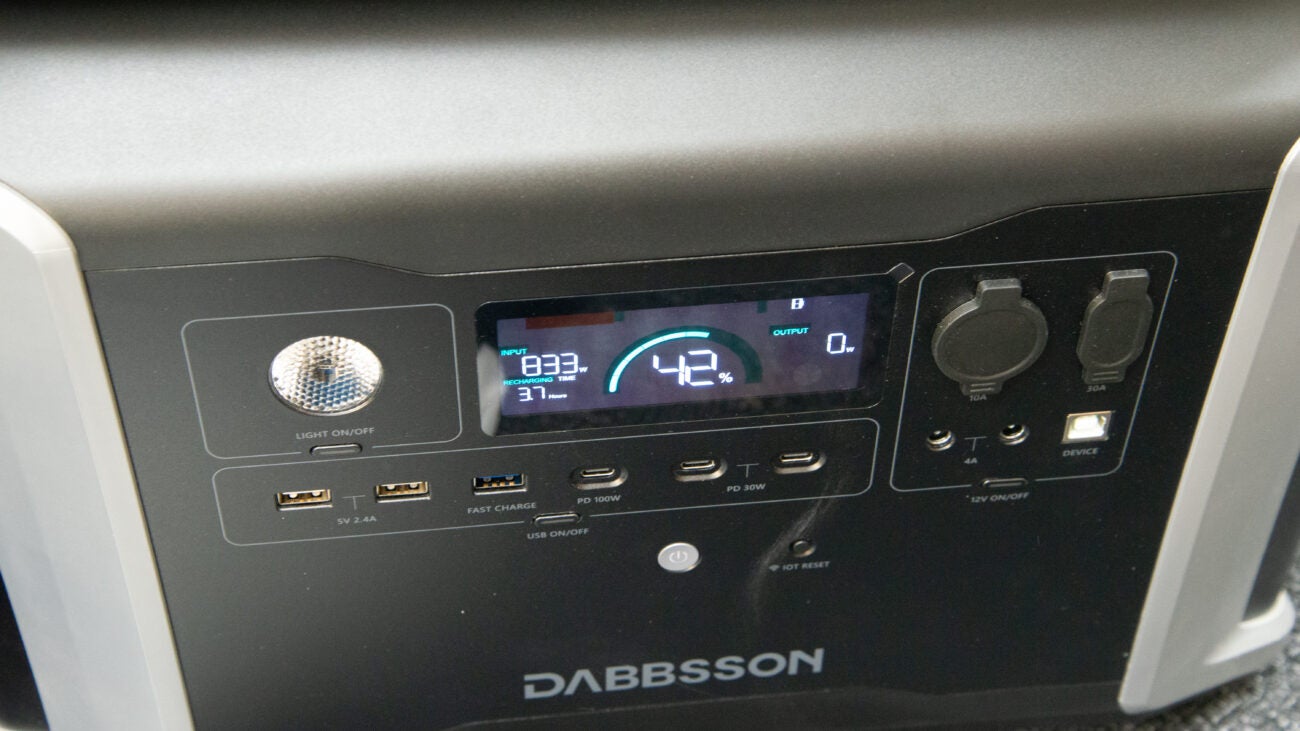
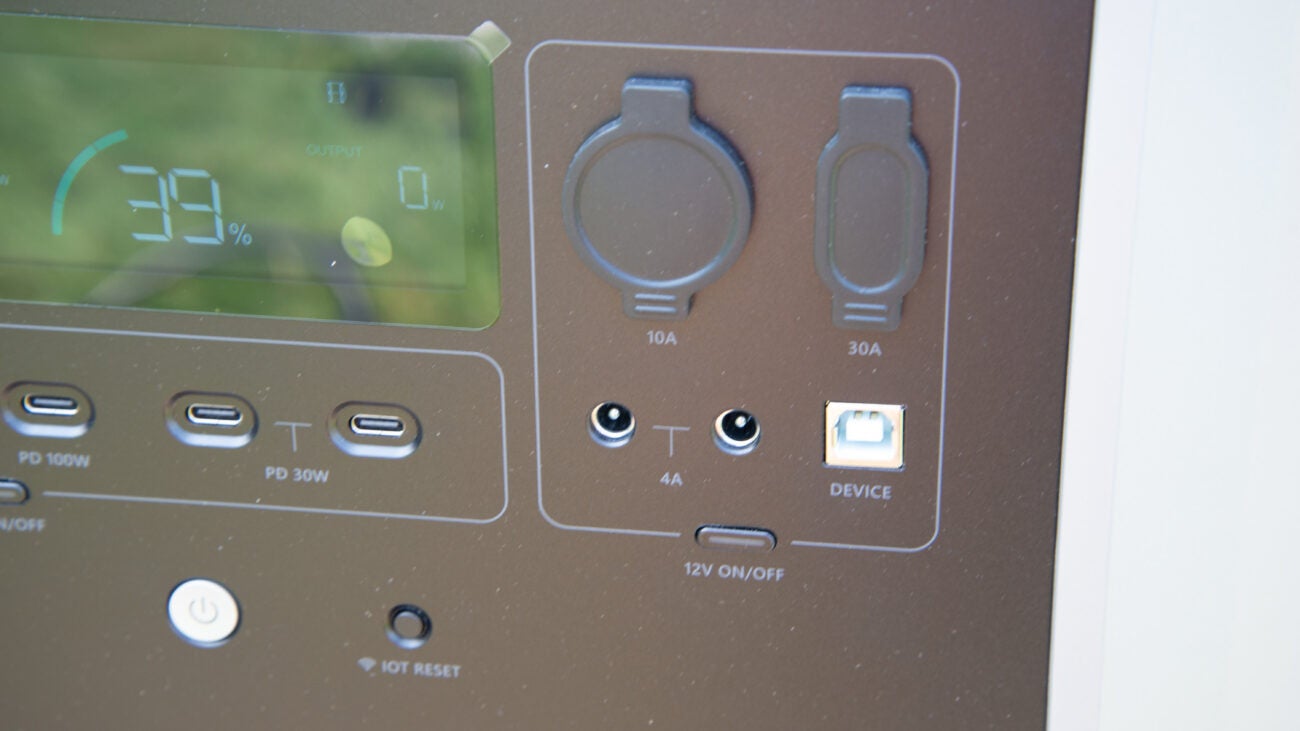
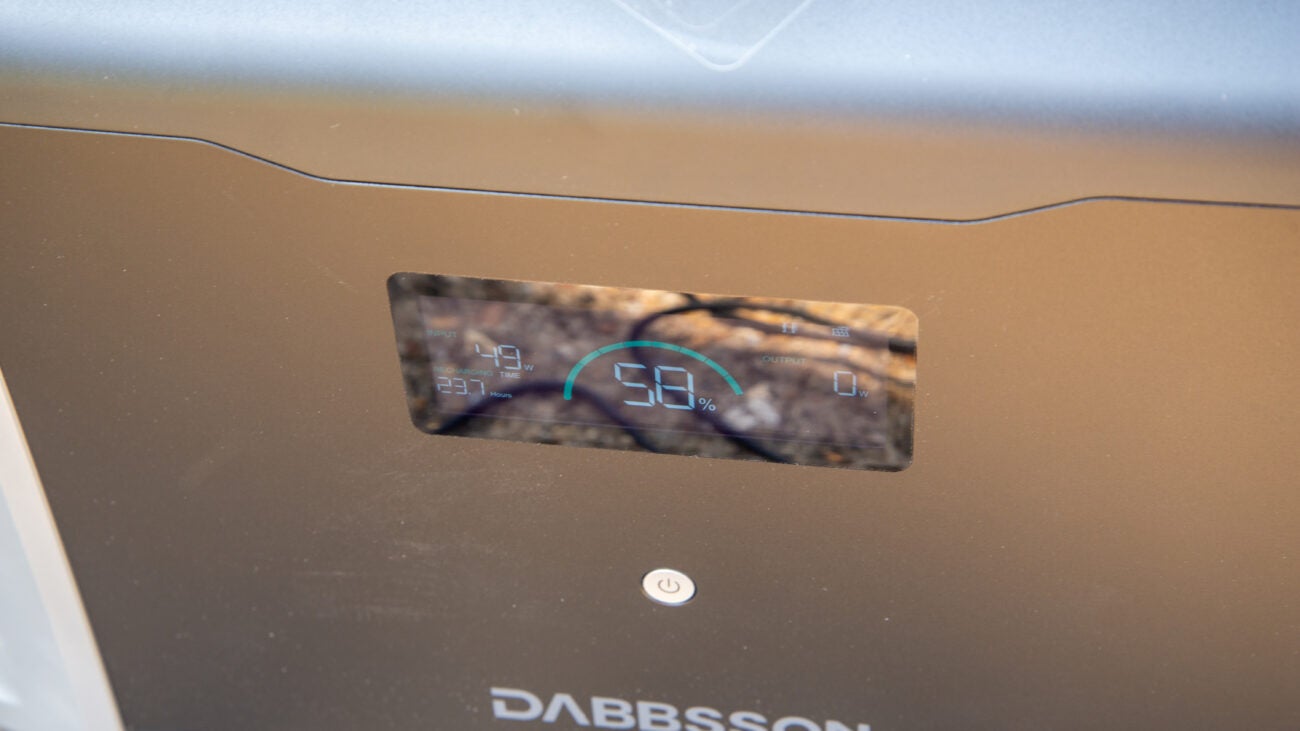
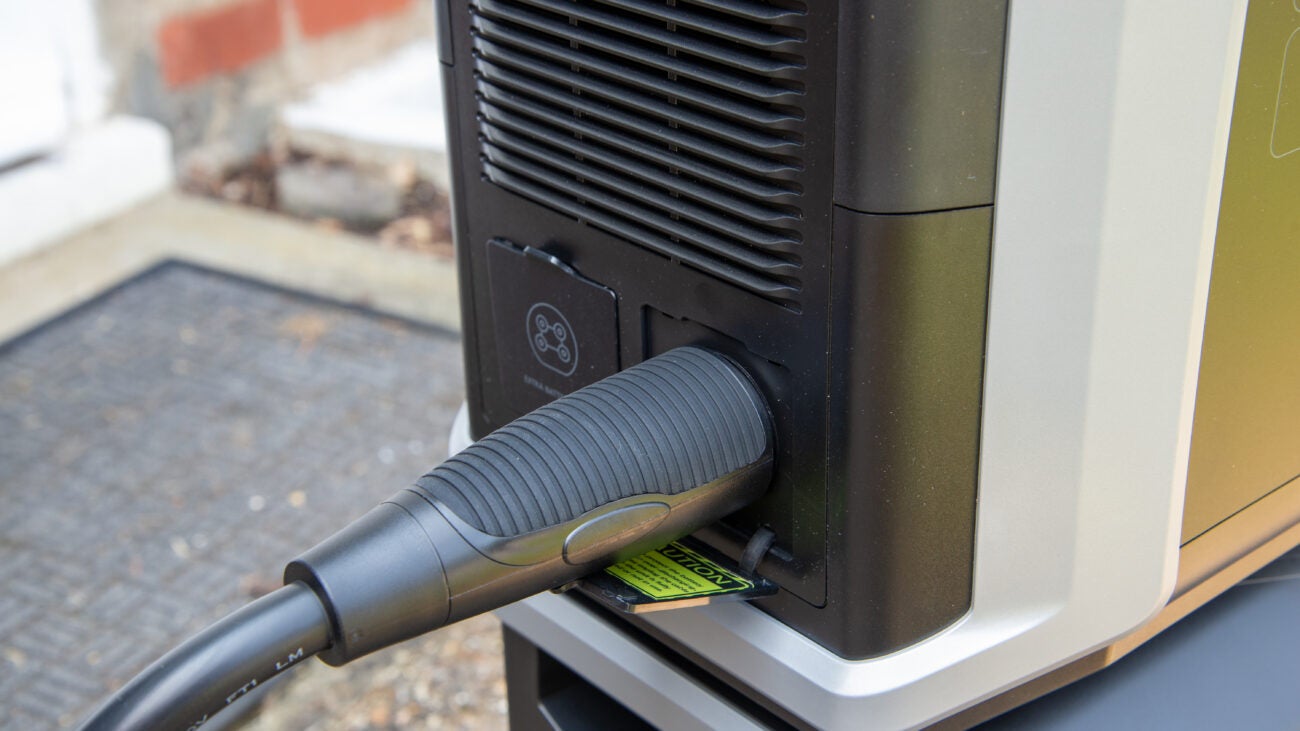
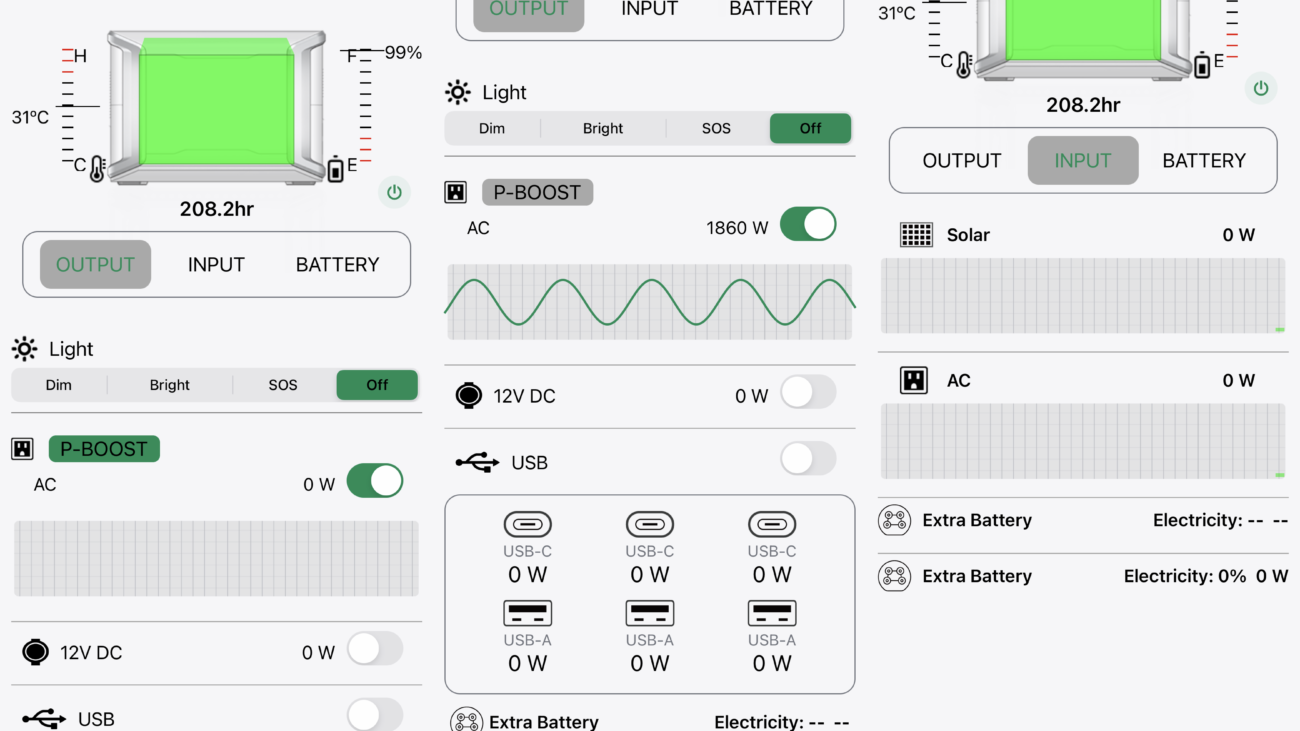

Verdict
With its huge lifespan of 4500 charges (to 80%), high power output and large capacity (expandable to 8kWh), the Dabbsson DBS2300 is a monster power station that’s ideal for those that need battery power for demanding applications.
Pros
- Exceptionally long life
- High capacity
- Expandable
Cons
- Slightly confusing display information when extra battery is used
Key Features
- CapacityThe main unit has a 2330W battery, upgradeable by adding one or two additional 3kWh batteries.
- OutputSupports AC power up to 4400W on surge.
Introduction
Although, from the outside, the Dabbsson DBS2300 looks very much like other battery power stations, inside there’s a massive 2330Wh solid state LiFeP04 battery.
Excellent longevity, expandable capacity and a high-power output make this an excellent choice for life on the road or home backup.
Design and features
- Expandable battery pack
- Plenty of outputs
- Displays can be a little confusing
Externally, the Dabbsson DBS2300 looks like many other battery stations, such as the EcoFlow Delta 2. It has two handles at the side for carrying around. At 24.61kg and measuring 438 x 254 x 302mm, this is not a light product, but I didn’t find it too strenuous to carry from one location to another.
I slightly prefer the cooler-box design of the Jackery Explorer 1500 Pro, which has a large flip up handle that makes carrying it easier. While both the Jackery and Dabbsson batteries are a similar physical size, the DBS2300 pulls in front in terms of capacity.
With its 2330Wh solid state LiFeP04 battery, Dabbsson claims that its power station increases storage density by 30% compared to the competition. In fact, the DBS2300 has a capacity only 712Wh less than the massive Bluetti AC500 + B300S Home Battery Backup. Admittedly, the Bluetti system is designed for higher power output and can expand further, but the comparison still demonstrates just how impressive the DBS300’s capacity really is.
Capacity is expandable too, by adding additional DBS300B 3000Wh batteries. Two can be added, with the batteries connected via the outputs on the side of the DBS2300. That gives a total capable capacity of 8330Wh – about the same as a UK home will use in a day.
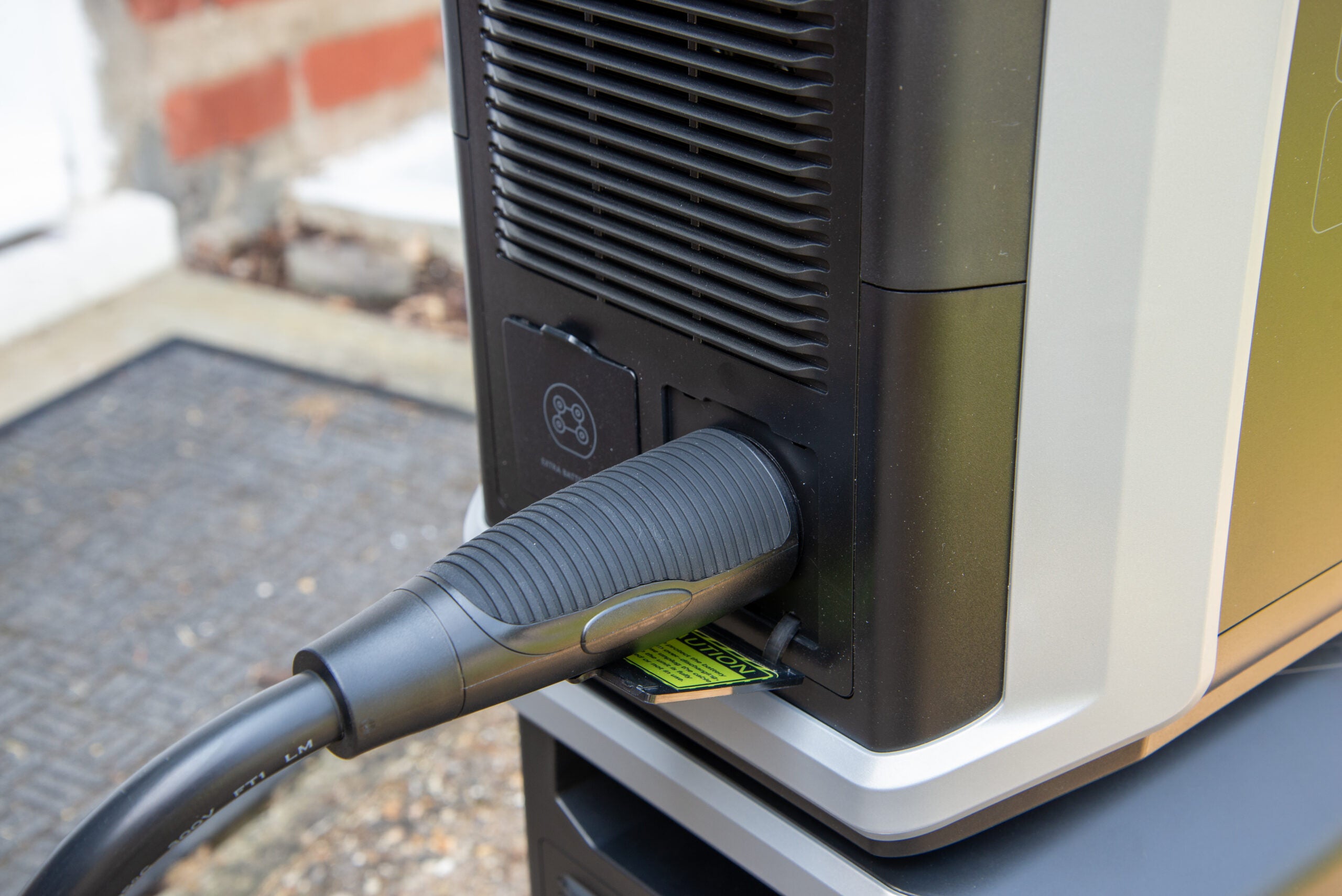
The range of outputs is good. At the front, there are three USB-C (two 30W and one 100W for laptops), dual 5.2A USB and one Fast Charge port. There are two 4A DC5521 ports, a 10A car output and a 30A Anderson output.
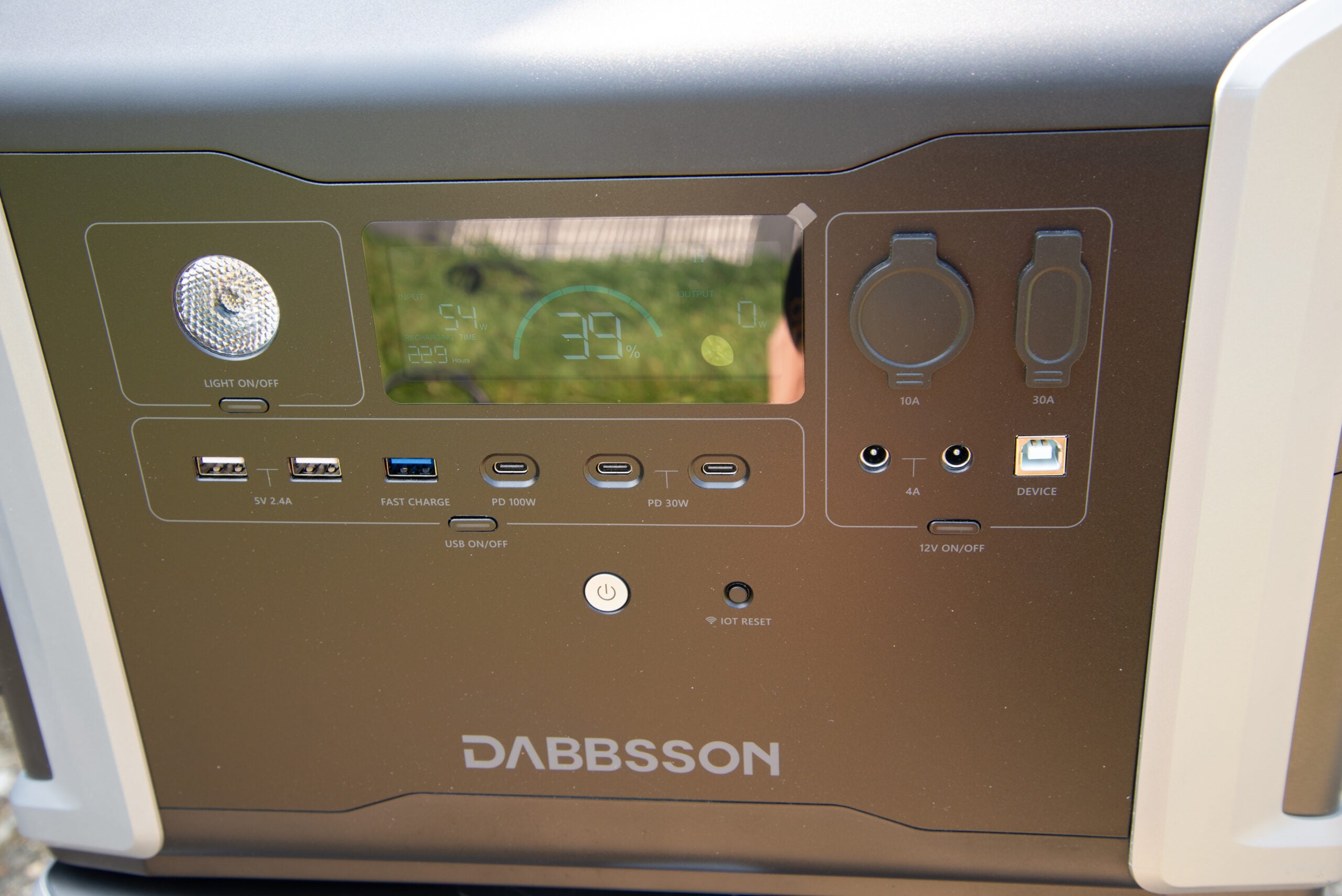
On the end of the DBS2300, there are two standard UK plugs, which have a maximum output of 2200W (with a surge of 4400W). That’s enough to power most UK appliances, bar the most powerful kettles and some electric heaters.
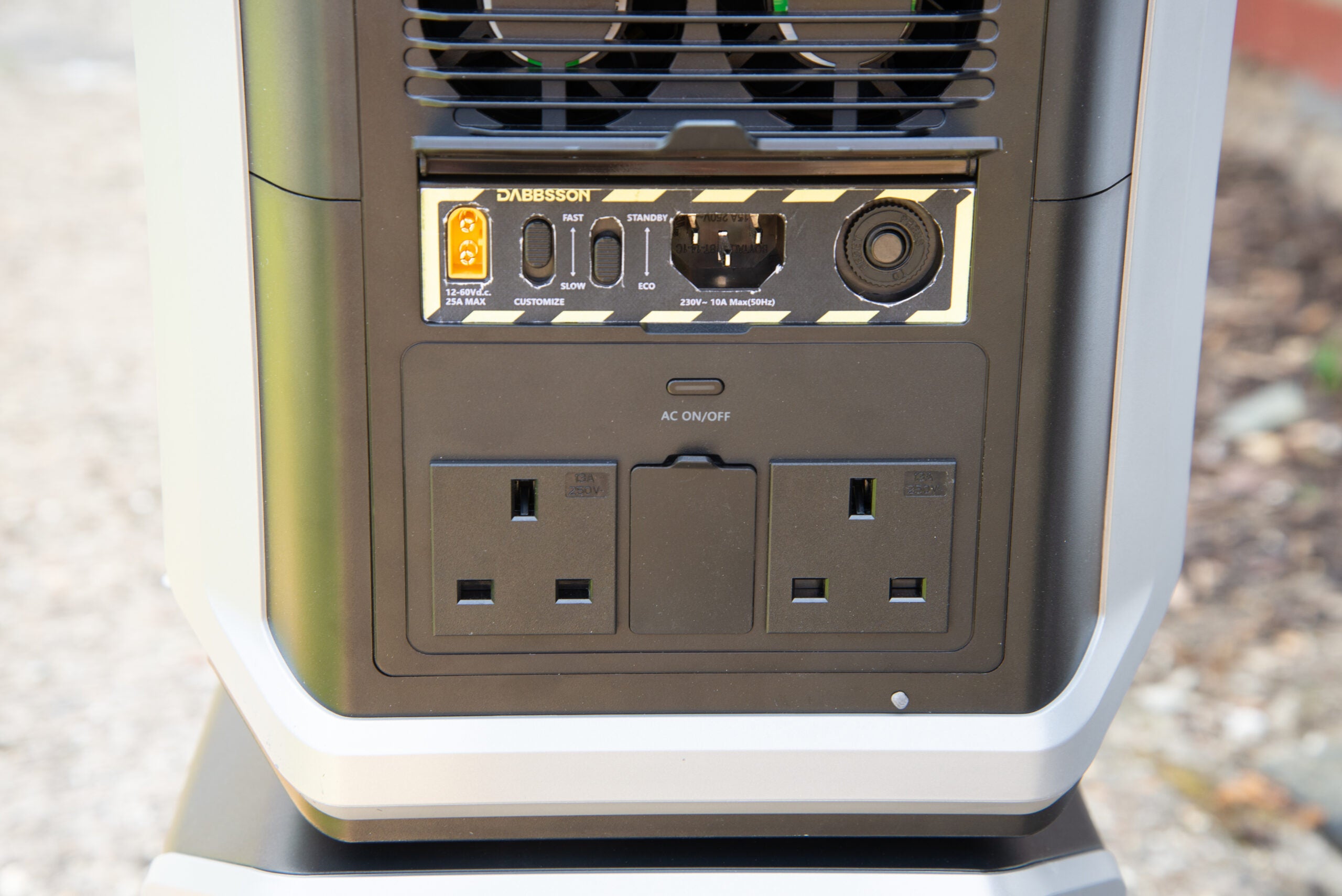
For charging, there’s a standard kettle lead, which can deliver up to 1800W of input, plus the Dabbsson DBS2300 can be charged with solar, accepting up to 800W of input power.
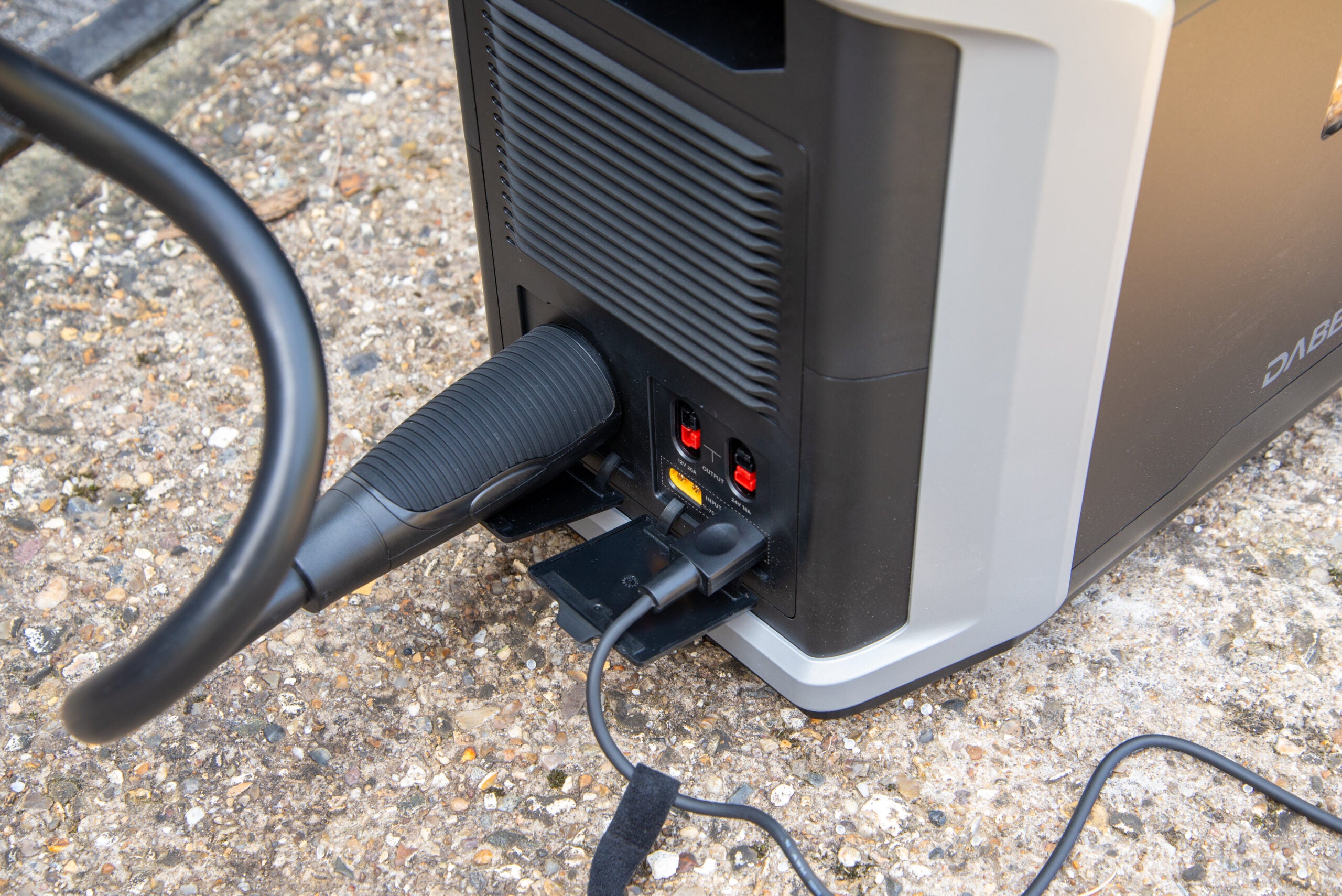
The USB, 12V and AC outputs are all controllable individually, plus there’s a master on/off switch. Once powered on, there’s a clear LCD that shows the current input power, output draw, the battery charge status as a percentage, and how long in hours the battery will last under the current draw.
It’s neatly laid out and made it easy for me to see, at a glance, how long the system would last.
Add additional batteries, and things get slightly confusing. Each battery has its own LCD, showing input and output power, battery percentage and time remaining in hours. This information is not synchronised between the system, so the results can be a little confusing.
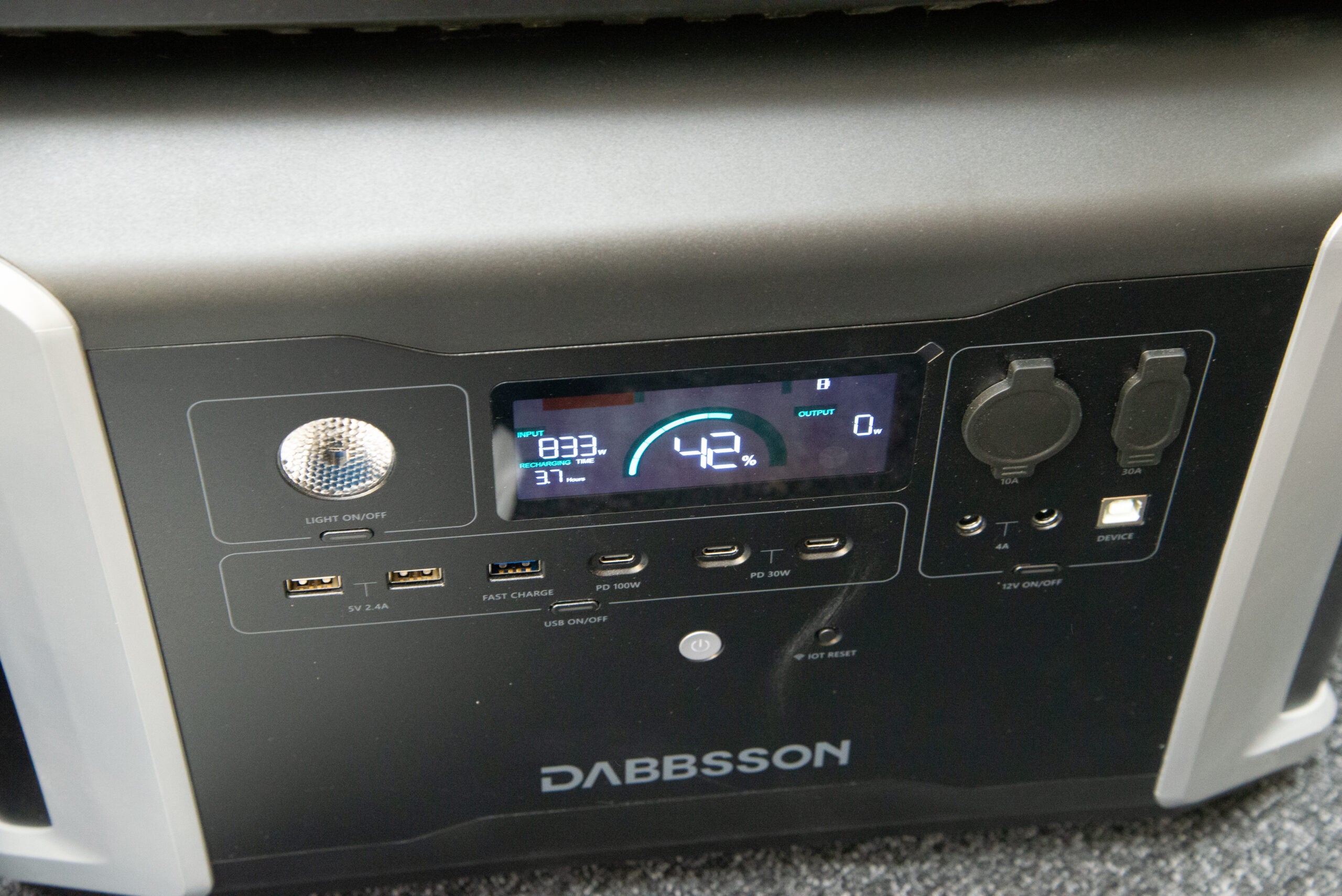
For example, I plugged in a 2kW heater, and the battery said it would last for three hours, but the main unit said it would last for 1.5 hours.
Similarly, when charging, the input power is split between the main unit and the batteries, so each will reach a final charge at a different time. It would be better if the main screen could collate all of the information from all of the batteries to give a more accurate read out.
Bluetooth and Wi-Fi are available, with the Dabbsson smart app giving the same information as the main screen, plus the option to toggle the power outputs on and off. It also pings useful information, such as a warning should the battery cable get disconnected.
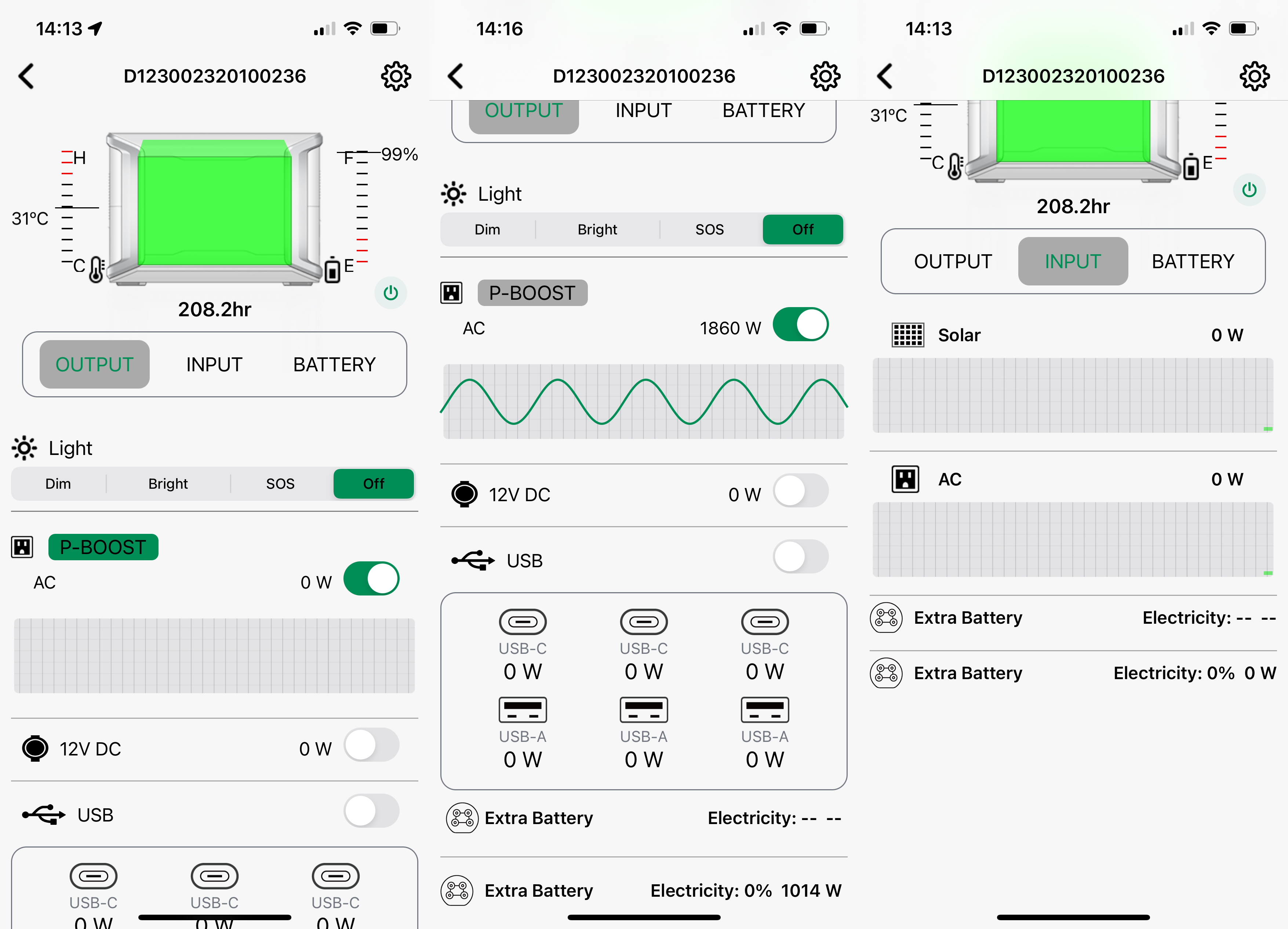
As well as providing power from its battery, the Dabbsson DBS2300 can act as an Emergency Power Supply (EPS) when connected to the mains. When there’s mains power, the unit passes AC through to its outlets; should there be a power cut, the Dabbsson DBS2300 switches to its battery.
With a switchover time of 15ms, the Dabbsson DBS2300 may not be fast enough for critical computers or medical equipment, but should be fine for most domestic appliances.
Charging and solar
- Up to 600W of solar input
- Fully charges in two hours
Using a mains input, the Dabbsson DBS2300 can be fully charged in just two hours from scratch. Adding additional batteries increases the total charge time, with each one taking around three hours to fully charge.
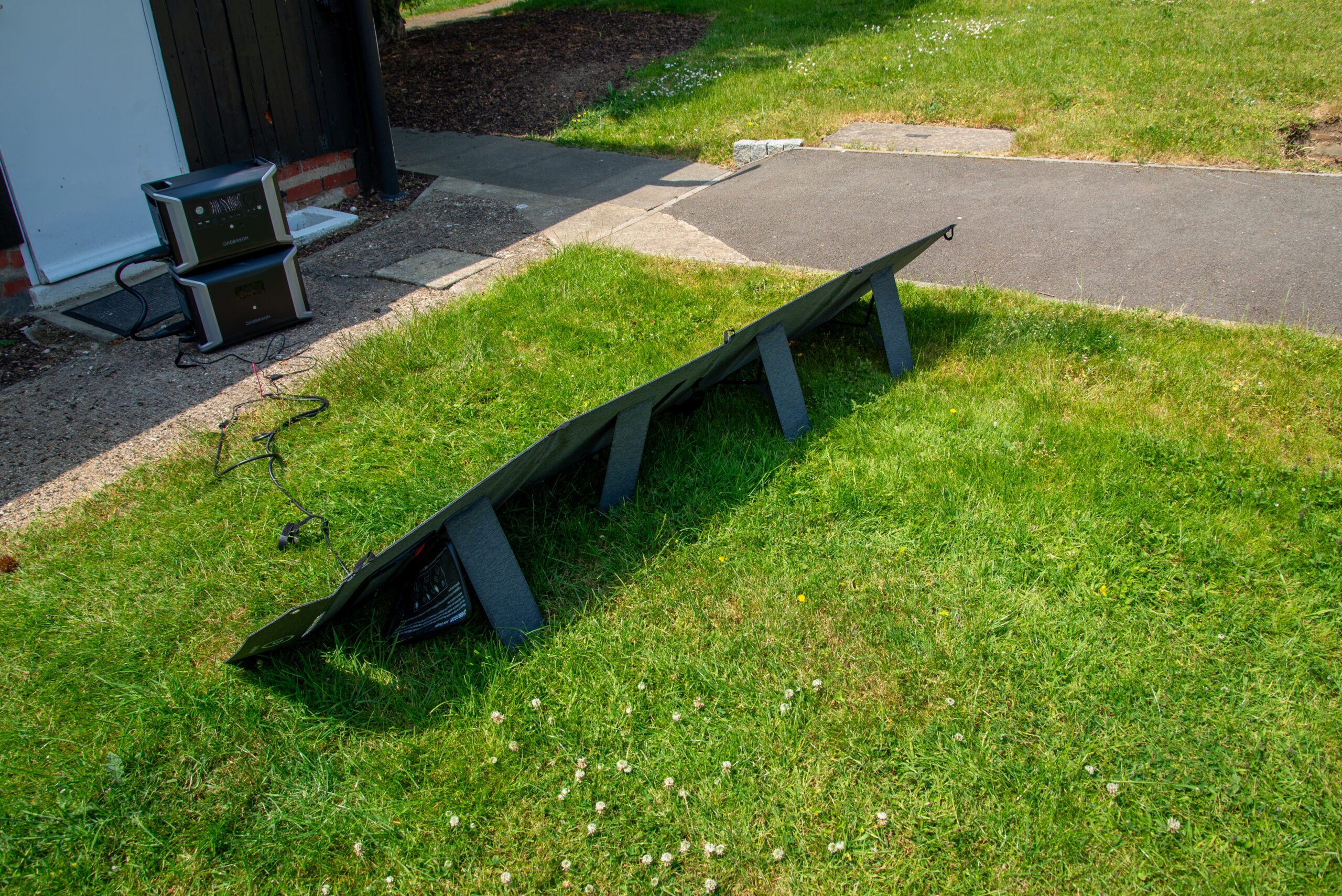
Solar input is available, and Dabbsson makes its own 200W solar panels. I’m a big fan of their design, as they fold up neatly and the cable and MC4 connector zip away neatly into a pocket at the front. With integrated stands at the back, the solar panel is quick to set up and quick to fold down.
With a 200W solar input, assuming full brightness, it can take up to 12 hours to fully charge the DBS2300. Of course, that depends on how bright it is: on a bright day, I got an input of 135W; with cloud cover, the input could drop as low as 30W.
With an add-on battery, up to three 200W solar panels can be connected in series to the system, increasing the input power to 600W. This increases input power but increases the amount of work a solar panel has to do.
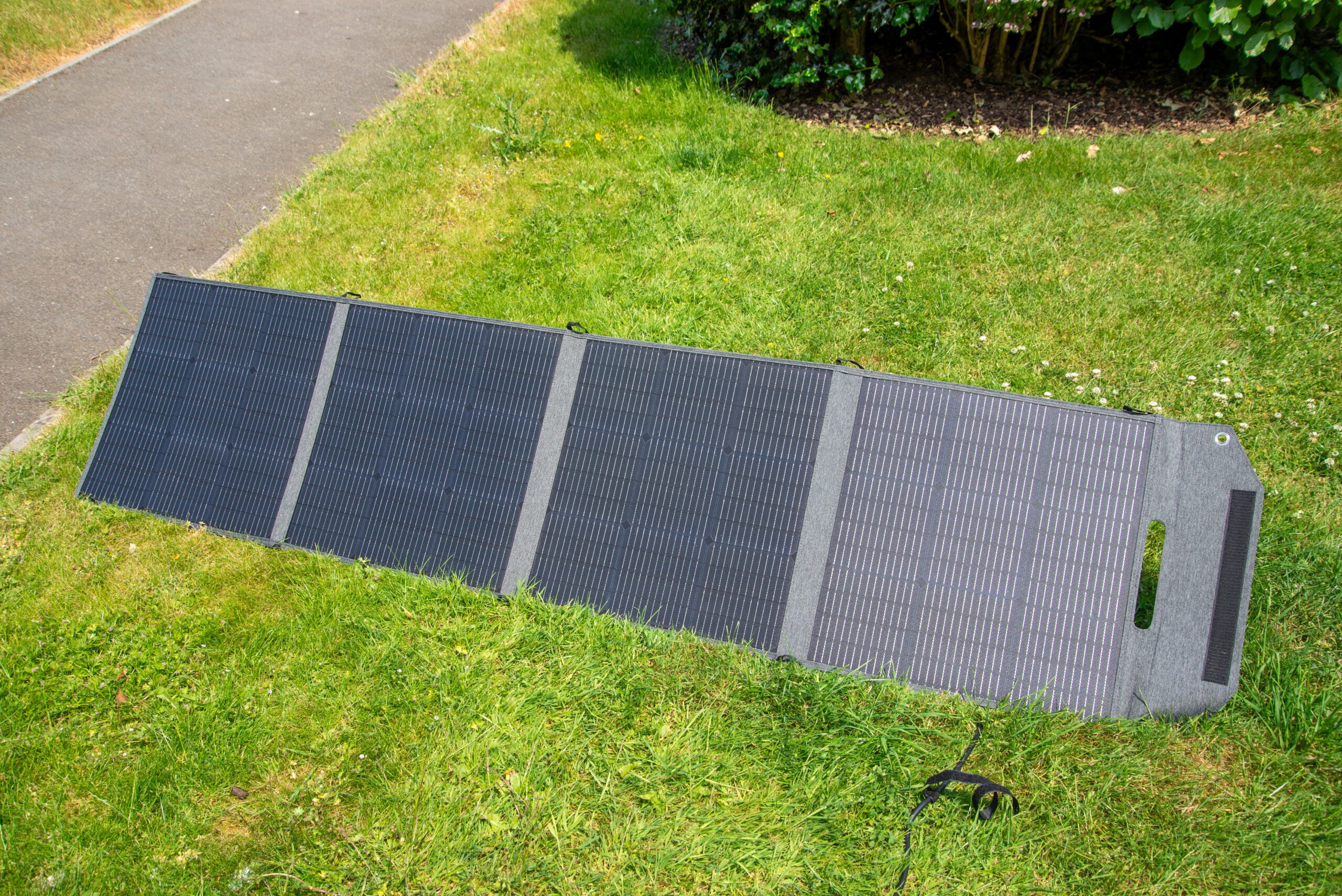
You may be better off buying a larger 400W solar panel with a XT60 connector from a rival if you want to increase the charging speed of just one device.
As to whether solar panels are worth the investment, it really depends on where you plan to use them, and how much sunlight you can expect. For those going camping, the answer is probably yes; if you’re using the DBS2300 at home, it may be cheaper to charge overnight using an off-peak rate.
Performance
- High power output
- Smart surge protection
Supporting devices of up to 2200W, the Dabbsson DBS2300 can handle most household appliances, particularly with a surge of 4400W. However, to handle the highest power devices, the system should not be connected to the mains. While charging the battery, I connected a Dreo Solaris Slim H3 and ran it on its maximum power mode, which tripped the system and shut it down; unplugging the mains cable, I could run the heater on maximum power for around an hour.
I charged the Dabbsson DBS2300 to maximum power and ran the Dreo heater on its middle mode (around 1kW of draw). This gave me more than two hours of use out of the system, with my power reader showing that I’d consumed 1.964kWh of power – an efficiency of 84.29%. Some power is lost through powering the inverter, but this is an excellent result.
Efficiency can drop with lower power draws, but if you only want to run some basic items and charge a laptop or two, then lower-power systems, such as the EcoFlow River Pro would make more sense.
The LiFeP04 battery has a high cycle rate: 4500 charge cycles until the battery is at 80%. In this time, it means that the system will hold around 10,485kWh of power. Given the price of the system (£1999), that works out at around 19p per kWh for storage. That’s a lot cheaper than even the EcoFlow Delta 2, and almost a fifth of the price of the Jackery Explorer.
Of course, the Dabbsson DBS2300 will continue to run after this point, it’s just that the capacity will continue to diminish. Still, comparing batteries to the 80% level in this way is a useful comparison.
Latest deals
Should you buy it?
You want power and longevity:
A minimum of 2330Wh and 4500 charge cycles makes this a great system for heavy users.
You have more modest needs:
This system is good value over time, but if you’re a light user a cheaper system to buy may suit you better.
Final Thoughts
If you want a long-lasting battery station that’s easily expandable, the Dabbsson DBS2300 is the best that I have tested. It packs a lot of power into the main unit, with 3000Wh expansion batteries increasing how useful the system is. And, with its high-power output, this system can manage most appliances. Given how long its batteries last for, this is a great choice for anyone that wants a high-power system that will be used heavily.
If you’ve got more modest needs, the cheaper 1024W EcoFlow Delta 2 has four UK power sockets and can handle appliances of a similar power. If you want the best and most flexible system, it’s the Dabbsson DBS2300.
How we test
We test every battery station we review thoroughly over an extended period of time. We use standard tests to compare features properly. We’ll always tell you what we find. We never, ever, accept money to review a product.
Find out more about how we test in our ethics policy.
We test with a variety of devices to see how long the battery will last.
We test different charging methods to see how quickly the battery can be topped up.
FAQs
The main unit has 2330Wh of power, but it can be expanded with up to two additional 3000Wh batteries.
Yes it does, and it will switch to battery power in 15ms in the event of a power outage.


